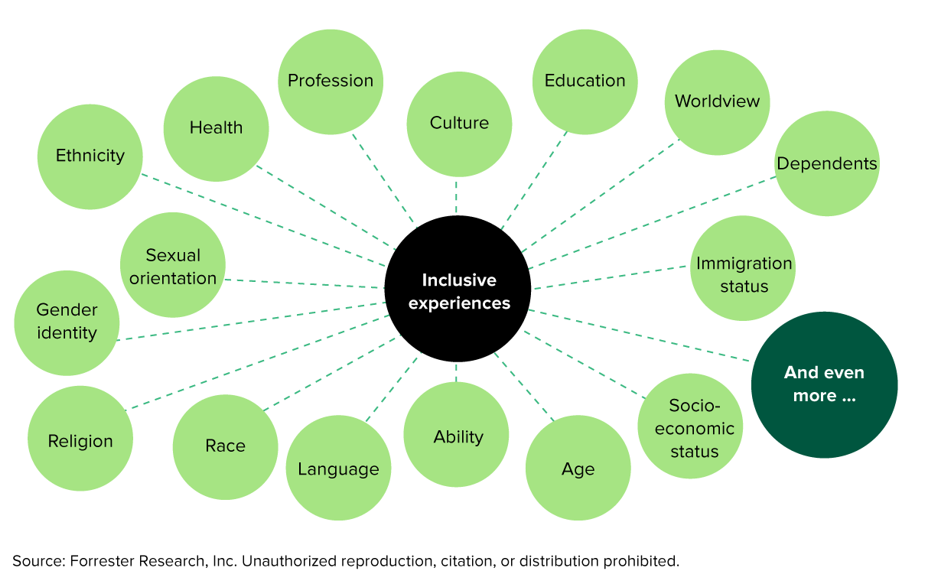Adopt Inclusive Design Practices That Put Users First This Holiday Season
Many companies say that they practice inclusive design, but most only approach inclusion as a one-dimensional idea. For example, a retailer may work hard to make its website and apps accessible to people with disabilities but then won’t put the same level of effort into designing for other marginalized groups. Inclusive experiences must consider the full range of human diversity, as shown below.

It takes time for brands to approach inclusive design more holistically — and that’s OK! This holiday season is a great time to start taking the first steps by:
- Prioritizing digital accessibility. Inaccessible experiences cause you to miss out on significant sales opportunities and put you at risk of getting sued. Sit down with your development team and run your most highly trafficked pages through a free accessibility testing tool such as WAVE. This will reveal any simple problems you can begin addressing right away, like product images missing alt text, poor color contrast, form fields that aren’t labeled correctly, and headers that aren’t properly tagged as headers in the code — all things that are critical for screen-reader users to navigate a site. Provide content creators with guidance on how to write great alt text. Challenge them to write product descriptions that are descriptive enough so that shoppers who can’t see the product images have all the details they need to make a purchase decision.
- Using inclusive language. Inclusive language is foundational to inclusive experiences: No matter how innovative the underlying technology is, words are still essential to how users perceive an experience. Start by eliminating industry jargon and using plain language. If you require demographic information to sign up for rewards or become a site member, explain why you need this information, how it will be used, and provide an inclusive set of answer choices. Tools such as Beyond Binary Code help companies ask for data in an inclusive way. If your content is available in different languages, don’t just rely on translation services — test it with customers who speak those languages.
- Showing that you care. Holidays can be emotionally difficult times for many customers. Empathize with your customers to better understand their needs this holiday season, and look for opportunities to show your support. More brands are offering their customers the opt-out option from holiday marketing emails because they trigger sadness and grief for many people for different reasons, such as the loss of a loved one. Forrester’s 2022 Customer Experience Index (CX Index™) leader Chewy.com shows caring for its customers with personal touches in its communications.
If you want to learn more or have any questions about how to make your digital experiences more inclusive this holiday season, please reach out to us. And stay tuned for more holiday-prep blog posts by many of our Forrester colleagues in the coming weeks! If you aren’t yet a client, check out our webinar, How To Scale Digital Accessibility.
